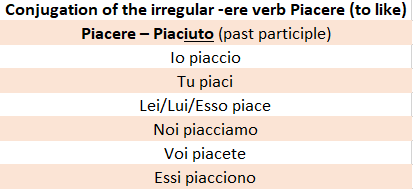The most common conjugations of Italian verbs of the second-conjugation (-ere)
In Italian, all the verbs ending in -ere are called second-conjugation verbs. As we will see in this article, they usually follow the same conjugation pattern. However, there are some exceptions. Don’t worry: as usual, we will make it very easy for you to understand and to learn how to speak like a true Italian!
Moreover, do not forget to check out our articles about Italian first-conjugation (or -are) verbs and third conjugation (or -ire) verbs!
Second-Conjugation Verbs

Other Second-conjugation Verbs
Here are some examples of second conjugation verbs:
Vincere (to win)
Bere (to drink)
Volere (to will)
Cadere (to fall)
Potere (to can)
Study tip! Remember that essere (to be) and avere (to have) are two auxiliary verbs, and they are not considered as part of the second conjugation. Do not forget to check out our articles about the most common conjugations of essere and avere!
The passato remoto of the Second-conjugation Verbs
The passato remoto (or past historic) of the -ere verbs has two different forms of the first and third person singular and of the third person plural.
Study tip! You do not need to remember both forms for each verb, since they are both correct. However, some of them are not commonly used in spoken Italian, and they are considered outdated. The forms ending in -etti, -ette and -ettero are preferred.

Different Types of ‘ere’-verbs
1. Verbs ending in -cere, -scere and -gere
These verbs are pronounced with a hard sound when the “c” or “g” are followed by “-a” or “-o”. The soft sound is maintained when the declination starts in “-e” or “-i”.
- Io vinco (I win)
- Io pungo (I sting)
However, there are some irregular verbs ending in -cere that still maintain their soft sound, by inserting an “-i” before the declination. You can recognise them by their past participle, that always ends in “-iuto”.

2.Verbs ending in -gnere
Verbs that end in -gnere can either maintain the “i” of the endings “-iamo” (present indicative) and “-iate” (subjunctive) or they can be written without the “i”. Both forms are correct! However, the first and third person singular of the indicative, and the singular and plural persons of the subjunctive tense lose their “gn” sounds, that becomes “ng”.

Irregular Second-conjugation Verbs
1.Fare and dire
Fare (to do) and dire (to say) are considered second-conjugation verbs, even if their declination is different, since they derive from the Latin verbs facere and dicere. Thus, their conjugations follow the -ere verbs pattern.

2.Verbs ending in -arre, -orre, -urre
Although it may be a little confusing and hard to remember, Italian verbs ending in -arre, -orre and -urre are considered second-conjugation verbs! This means that they follow the same conjugation pattern, just as the other second conjugation verbs.

3.Irregular -ere ending verbs
Linguistics recognise two main groups of irregular -ere ending verbs:
1. Verbs in -ere (valere, cadere, dovere) in which the stress falls on the root. The change occurs in their root, in the present indicative and subjunctive. Once you have learnt how to recognise these verbs, you will notice that they usually follow the same conjugation pattern.

2. Verbs in -ere, in which the stress falls on the stem (such as accendere). Usually the change occurs in their passato remoto and in their past participle.

“One of the most important areas we can develop as professionals is competence in accessing and sharing knowledge”









